
|
|
Oztrain: ProductsSideStoke home | Oztrain home |
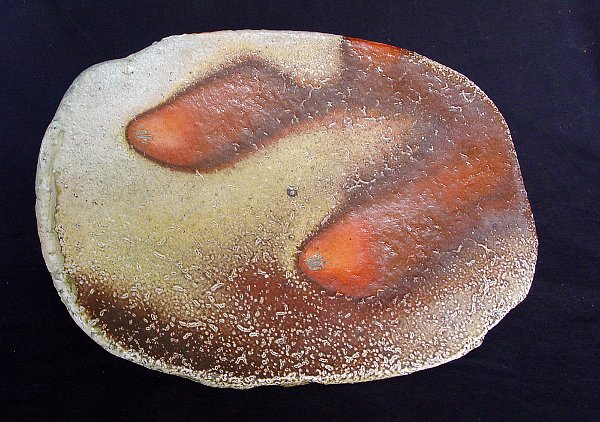 Arthur Rosser: platter 2009 46cm x 32.5cm Fired for 42 hours. Stacked on edge just behind the firebox, with sea shells in contact with the surface. The wood used was Flooded Gum (Eucalyptus grandis) and Blackwood (Acacia melanoxylon) |
| The
first firing of this kiln gave good results in the tumble stack area
and on the shelves nearest the firebox. The work shown here is
from these areas. Further away from the firebox we misjudged the
atmosphere and not enough reduction occurred. We used the three side
stoke ports nearest the chimney, and did not open the side stoke mouse
holes at all. There seemed to be adequate ash deposits even at
the rear of the kiln. In the next firing we intend to use only two side
stoke ports, but side stoke more intensively to induce more reduction. The second firing As anticipated above we changed both the arrangement of shelves and the firing procedure for the second firing. See the note on the kiln plan to understand the new shelf arrangement, and the use of only two side stoke ports. Side stoking started really early, just 5 hours into the firing. This resulted in breakage of pots behind the rear side stoke port because the pots were not hot enough when the side stoked wood started to burn. In future we will wait until the pots adjacent to the side stoke ports are showing a dull red glow before we start side stoking. The new side stoking regime did result in sufficient reduction at the back of the kiln, and we were ready to start the final firing procedure before cooling - the end game - 6 hours earlier than in the first firing, and the back of the kiln was at a higher temperature than that achieved in the first firing. The entire firing took 42 hours. The end game The method we used depends on using preheated air from the front of the kiln to burn light wood at the sidestoke areas. When the front of the kiln has been hot enough for long enough stoking at the main firebox stopped and all but a few square inches of air intake was closed off. Starting with the side stoke port nearest the firebox, flamethrower stoking was used, and the temperature monitored to the rear of the stoked area. As expected this resulted in a dramatic increase in temperature to the rear of the stoked port, while the front of the kiln cooled under oxidation. After 40 minutes, the area behind the stoking port had experienced a 120 degree rise, while the front of the kiln had cooled 70 degrees, so we stopped stoking the front side stoke port and started stoking the back side stoke port. After 35 minutes of stoking flamethrowers at the rear side stoke port, the temperature behind this port, already raised by the stoking at the front side stoke port, showed an additional 90 degree rise, and was showing every indication that it would keep on going up. However, we thought that that was hot enough, and stopped sidestoking and returned to stoking the main firebox. The temperature at the front of the kiln had plunged to less than 1000 degrees, so we wanted to bring it up under reduction to within 50 degrees of its temperature at the start of the end game. This decrease to below 1000 was much lower than at the same stage in the first firing, and it took nearly two hours to regain sufficent temperature at the front of the kiln. In the first firing the main firebox was stoked for only 50 minutes after restarting. After regaining sufficient temperature at the front of the kiln we executed the reduced cooling procedure described here. The changes made to the stacking and firing resulted in better reduction colours throughout the kiln, and the temperature at the rear of the kiln actually ended up higher than the temperature behind the main firebox. The highest cone at the back was cone 12, and its melted state suggests that cone 13 would have been over. |
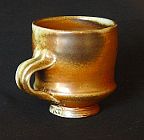 |
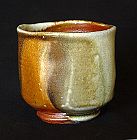 |
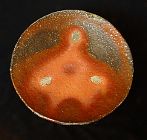 |
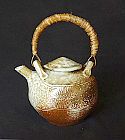 |